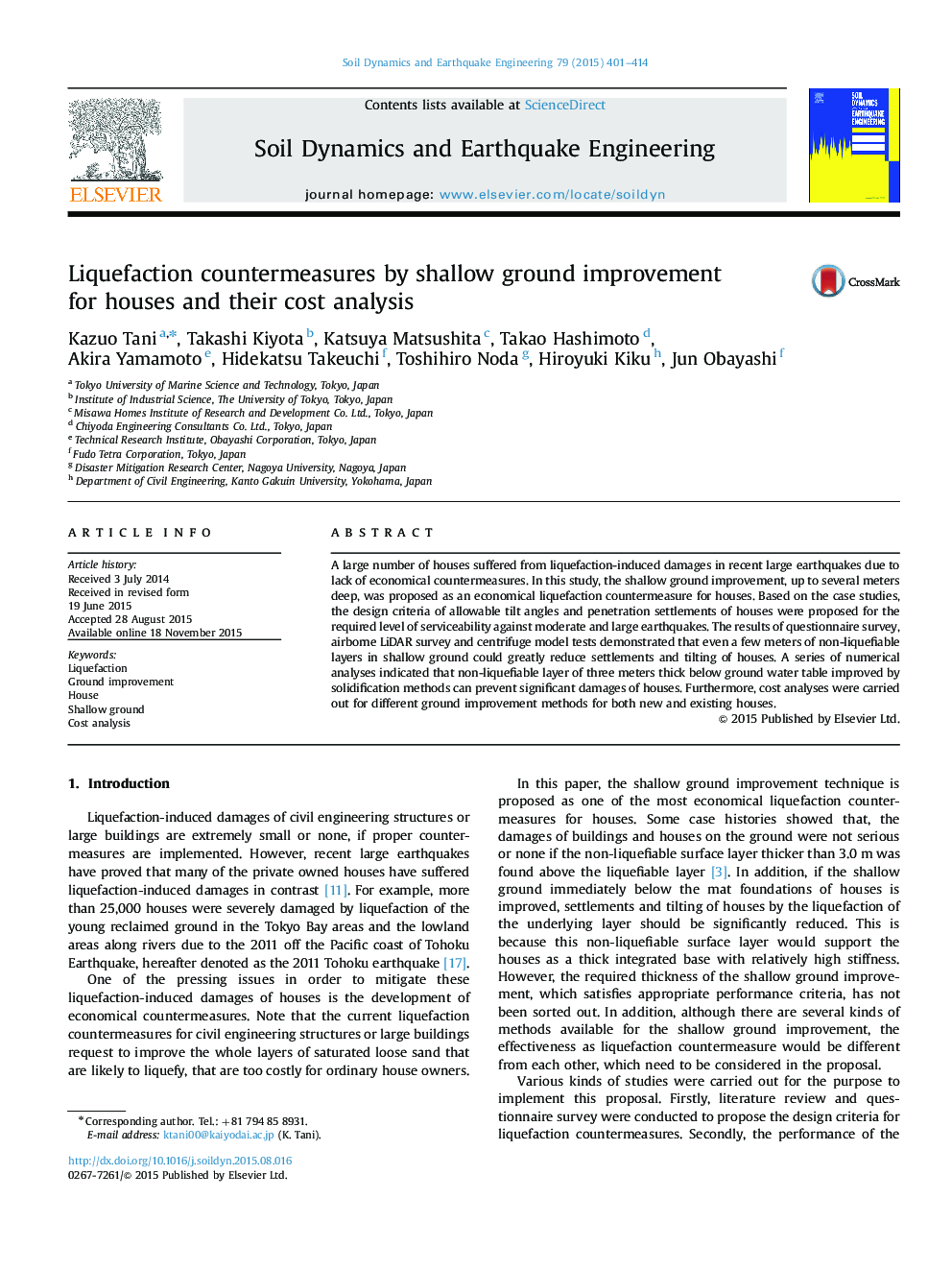| Article ID | Journal | Published Year | Pages | File Type |
|---|---|---|---|---|
| 303987 | Soil Dynamics and Earthquake Engineering | 2015 | 14 Pages |
•Shallow ground improvement was proposed as an economical liquefaction countermeasure.•Design criteria of allowable house deformations against earthquakes were proposed.•Questionnaire survey, airborne LiDAR survey and centrifuge model tests were done.•FEM analyses showed required thickness of improved layer to prevent house damages.•Cost analyses were done for different improvement methods for new and existing houses.
A large number of houses suffered from liquefaction-induced damages in recent large earthquakes due to lack of economical countermeasures. In this study, the shallow ground improvement, up to several meters deep, was proposed as an economical liquefaction countermeasure for houses. Based on the case studies, the design criteria of allowable tilt angles and penetration settlements of houses were proposed for the required level of serviceability against moderate and large earthquakes. The results of questionnaire survey, airborne LiDAR survey and centrifuge model tests demonstrated that even a few meters of non-liquefiable layers in shallow ground could greatly reduce settlements and tilting of houses. A series of numerical analyses indicated that non-liquefiable layer of three meters thick below ground water table improved by solidification methods can prevent significant damages of houses. Furthermore, cost analyses were carried out for different ground improvement methods for both new and existing houses.
